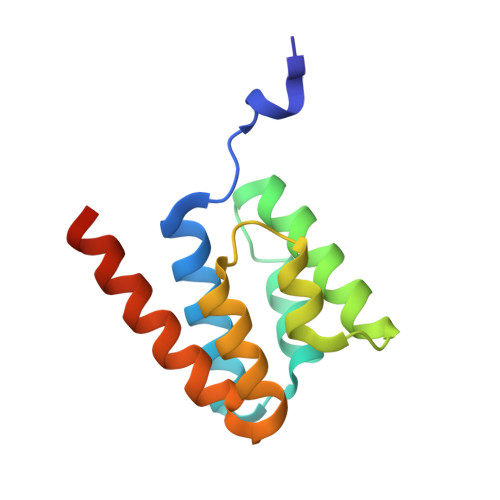Structure and Oligomerization of the Pilc Type Iv Pilus Biogenesis Protein from Thermus Thermophilus.
Karuppiah, V., Hassan, D., Saleem, M., Derrick, J.P.(2010) Proteins 78: 2049
- PubMed: 20455262
- DOI: https://doi.org/10.1002/prot.22720
- Primary Citation of Related Structures:
2WHN - PubMed Abstract:
Type IV pili are expressed from a wide variety of Gram-negative bacteria and play a major role in host cell adhesion and bacterial motility. PilC is one of at least a dozen different proteins that are implicated in Type IV pilus assembly in Thermus thermophilus and a member of a conserved family of integral inner membrane proteins which are components of the Type II secretion system (GspF) and the archeal flagellum. PilC/GspF family members contain repeats of a conserved helix-rich domain of around 100 residues in length. Here, we describe the crystal structure of one of these domains, derived from the N-terminal domain of Thermus thermophilus PilC. The N-domain forms a dimer, adopting a six helix bundle structure with an up-down-up-down-up-down topology. The monomers are related by a rotation of 170 degrees , followed by a translation along the axis of the final alpha-helix of approximately one helical turn. This means that the regions of contact on helices 5 and 6 in each monomer are overlapping, but different. Contact between the two monomers is mediated by a network of hydrophobic residues which are highly conserved in PilC homologs from other Gram-negative bacteria. Site-directed mutagenesis of residues at the dimer interface resulted in a change in oligomeric state of PilC from tetramers to dimers, providing evidence that this interface is also found in the intact membrane protein and suggesting that it is important to its function.
Organizational Affiliation:
Faculty of Life Sciences, University of Manchester, Manchester, United Kingdom.














